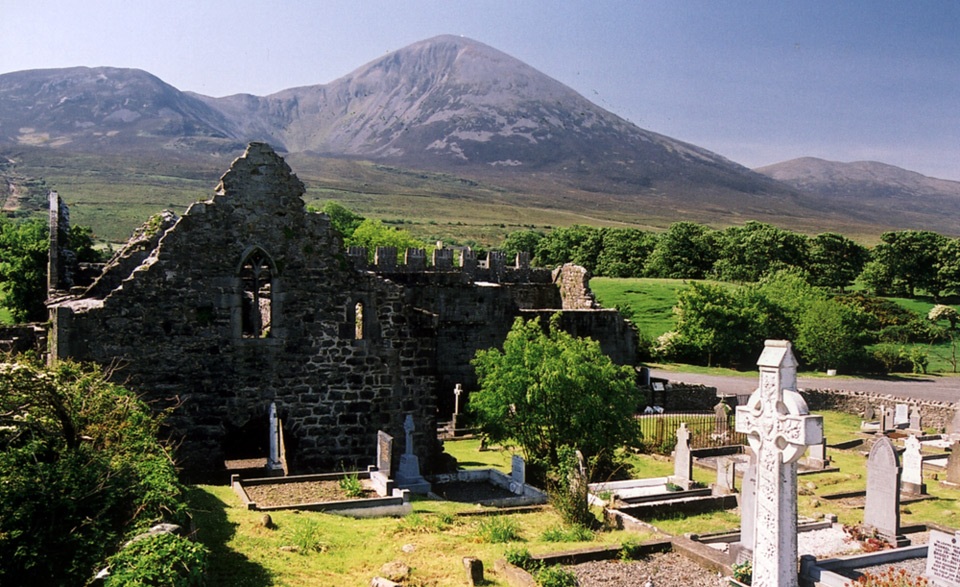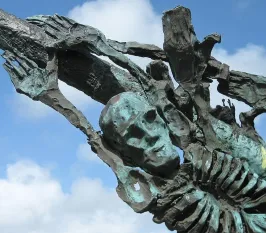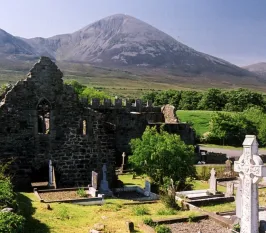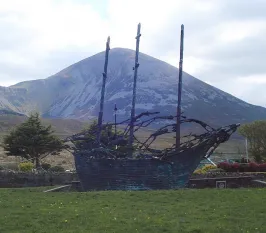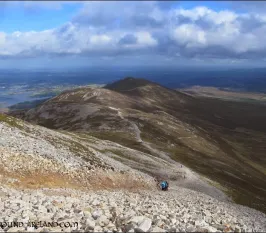Overlooking Clew Bay at the bottom of Croagh Patrick,, Murrisk village has scenic views in all directions and a rich history, particularly as the starting point of the pilgrimage up the Reek, as Croagh Patrick is also known.
The origin of the name ‘Murrisk’ (Muraisc in Irish) is uncertain, but it is generally agreed that it comes from either ‘Muir Riasc.’ marsh by the sea, or ‘Muir Iasc’ – the sea monster worshipped in pre-Christian times.
About 9.5km (6 miles) west of Westport on the Louisburgh Road (R335), Murrisk has two pubs, one at either end of the village, both of which serve food.
Murrisk Abbey
In the mid-15th century, the Augustinian Friars founded Murrisk Abbey, which replaced the Tóchar Phádraig as the preferred starting point for pilgrimages up Croagh Patrick. The friars were driven out in the late 16th century during the Reformation.
As with most buildings of this age around Clew Bay, the abbey has connections with legendary pirate queen, Granuaile. A chalice, now in Tuam, bears the inscription:









